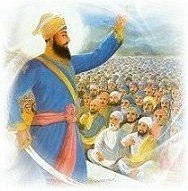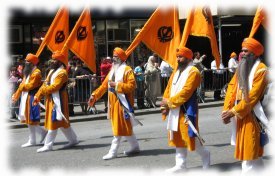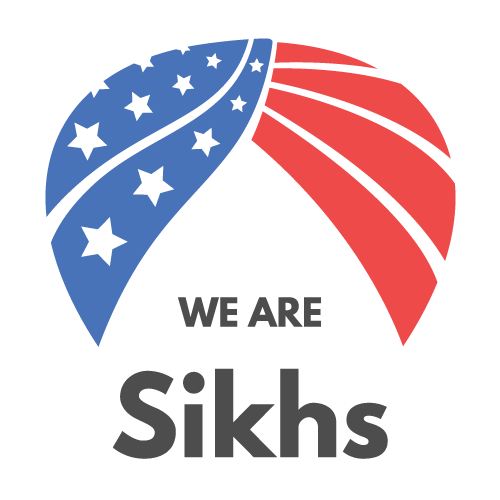Vaisakhi

Vaisakhi (also spelled Baisakhi) is the festival which celebrates the founding of the Sikh community known as the Khalsa. It is celebrated on April 14 each year. On Vaisakhi day in 1699, Guru Gobind Singh summoned Sikhs from all over India to the city of Anandpur Sahib. At this gathering, the Guru called upon Sikhs to uphold their faith and preserve the Sikh religion. Guru Gobind Singh then lifted his sword and asked that anyone prepared to give his life for his faith to come forward. There was a big silence, but the Guru went on repeating his demand. One Sikh finally came forward and followed the Guru into a tent. Shortly after, the Guru reappeared alone with his sword covered in blood, and asked for a second volunteer. Another Sikh stepped forward and again the Guru took him into the tent, and re-appeared alone with his sword covered with blood. This was repeated until five Sikhs had offered their heads for the Guru. Finally, the Guru emerged from the tent with all five men dressed piously in blue. Guru Gobind Singh called the five Sikhs the Panj Pyare, the Five Beloved Ones.

The Panj Pyare were then baptized in a unique ceremony called pahul. Guru Gobind Singh prepared amrit (holy water) in a bowl using a short steel sword. Then the Guru's wife, Mata Sundri, added patashas (sugar crystals) into the amrit. After completing prayers, Guru Gobind Singh sprinkled the amrit on each of the Panj Pyare. The Guru then knelt before the five and asked them to baptize him as well. The Guru proclaimed that the Panj Pyare would be the embodiment of the Guru himself: "Where there are Panj Pyare, there am I. When the Five meet, they are the holiest of the holy."
The Panj Pyare were the first members of the new Sikh community called the Khalsa. Guru Gobind Singh gave the Khalsa a unique identity with five distinctive symbols of purity and courage, known today as the Five K's. The Guru gave all Khalsa men the surname of Singh (lion) as a reminder to be courageous. Women took on the surname Kaur (princess) to emphasize dignity. With the distinct Khalsa identity, Guru Gobind Singh gave all Sikhs the opportunity to live lives of courage, sacrifice, and equality. These Sikhs were to dedicate their lives to the service of others and the pursuit of justice.

Bhai Daya Singh
- First of the Panj Pyare.
- Along with Bhai Dharam Singh, was sent to deliver the Zafarnamah to Emperor Aurangzeb.
- Exemplified kindness.
Bhai Dharam Singh
- The second of the Panj Pyare.
- Son of a farmer from Hastinapur, a small town along the river Ganges.
- Accompanied Guru Gobind Singh to Nanded and was him at the time of his death.
- Exemplified justice and righteousness.
Bhai Mukham Singh
- The third of the Panj Pyare.
- Son of a cloth-printer from Gujarat.
- Practiced martial arts and took part in many battles against the Mughal forces.
- Died in the battle of Chamkaur.
- Exemplified organization.
Bhai Himmat Singh
- The fourth of the Panj Pyare.
- Son of a water-supplier from Jagannathpuri.
- Proved himself as a brave warrior.
- Died in the battle of Chamkaur.
- Exemplified courage.
Bhai Sahib Singh
- The fifth of the Panj Pyare.
- Son of a barber from Bidar, a town in Karnataka.
- Died in the battle of Chamkaur.
- Exemplified majesty.



